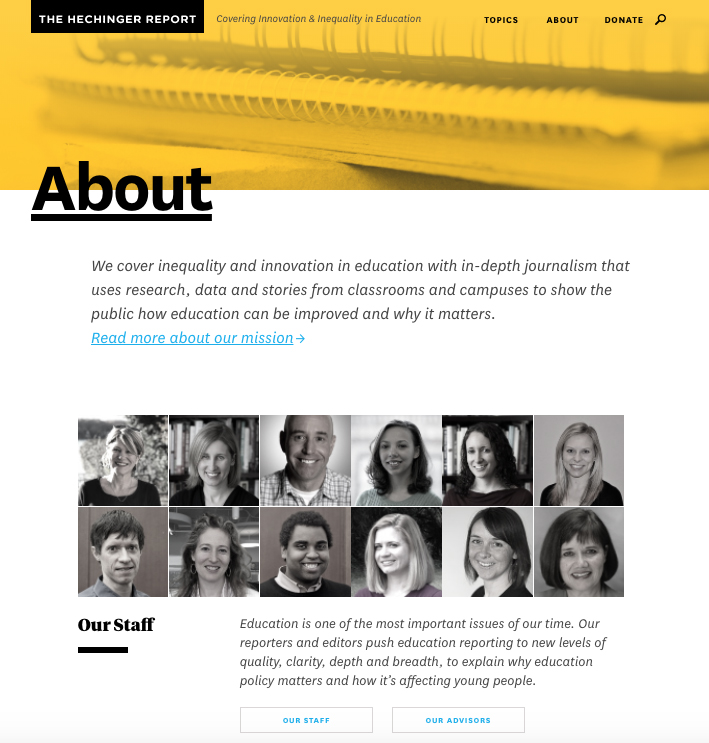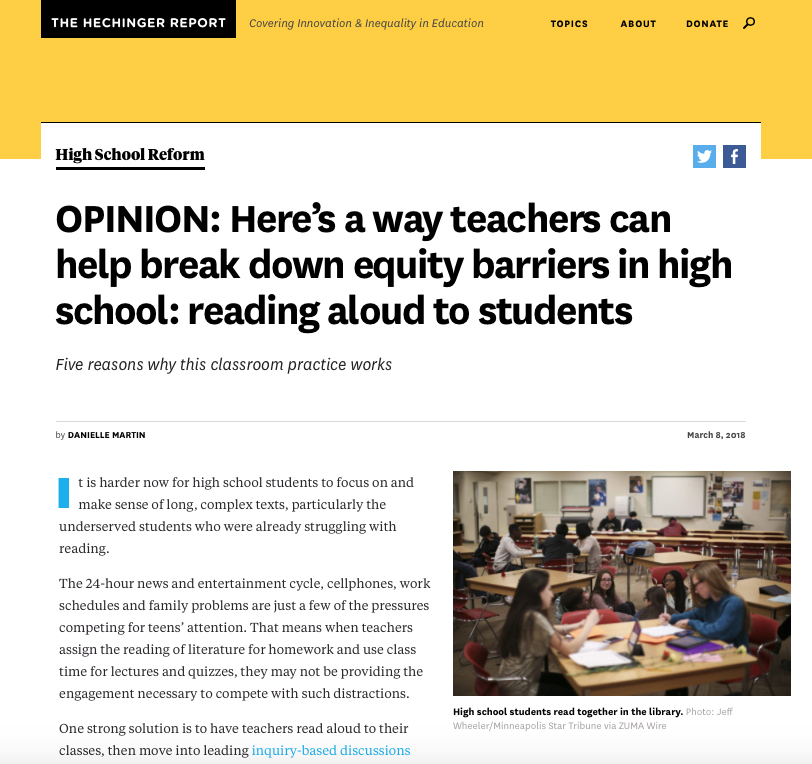As a high school teacher, are you reluctant to read an entire novel (or other type of book) aloud to your students? Maybe reading aloud feels like a pedagogical approach more suited to elementary students? Or perhaps you do read aloud to your students as a practical way of reaching the diverse group of learners in your class, but your colleagues, principal or students’ parents aren’t completely supportive of the practice? Well, go ahead, read that book aloud and feel confident that you are engaging in a research-based teaching practice!
Solid research supports reading to students
 According to a recent article published in The Hechinger Report (a non-profit, non-partisan organization based at Columbia University), reading aloud to students of all ages offers multiple benefits and is an important way to break down equity barriers in high school.
According to a recent article published in The Hechinger Report (a non-profit, non-partisan organization based at Columbia University), reading aloud to students of all ages offers multiple benefits and is an important way to break down equity barriers in high school.
 The article by Danielle Martin refers to solid research and lists several reasons why teachers should definitely read aloud to their high school students. Here are just few:
The article by Danielle Martin refers to solid research and lists several reasons why teachers should definitely read aloud to their high school students. Here are just few:
- Reading aloud helps teachers reach students in their classrooms with a wide range of reading levels.
- Hearing an accomplished reader read aloud models fluent reading in diction and in tone.
- Reading aloud can promote a lifelong appreciation for storytelling and literature.
Access for PWT and TST students
Students in Prework Training or Training for a Semiskilled Trade have often missed out on acquiring basic knowledge because of struggles with reading. For many of our students, reading is a supremely difficult and unpleasant task!
For some students, reading can be
a supremely difficult and unpleasant task!
Listening to text read aloud can give our students access to information that otherwise might be inaccessible, improve their own individual reading skills, and make reading a more pleasant experience.
Reaching and teaching . . . and a necessary pleasure.
Regie Routman, author of Literacy Essentials: Engagement, Excellence, and Equity for All Learners (Stenhouse, 2018), describes reading aloud as “an indispensable first step in reaching and teaching [students]” and a “necessary pleasure.”
So go ahead and read that book aloud together!
 Sharing your experiences
Sharing your experiences
Share your own experience of reading aloud to your students with us at WorkPress: WOTP Community News! What books (fiction, non-fiction, poetry) have you read aloud with your class? What discussions and other learning activities did you use to deepen students’ understanding? E-mail Ingrid.
Contributed by
Ingrid Hove Gust
WOTP Project Development Officer

Comments are closed.